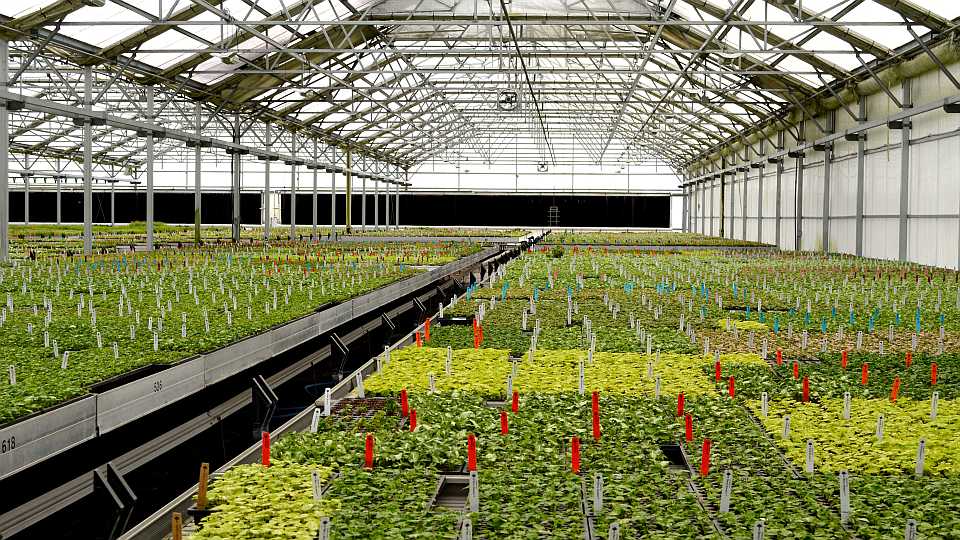Tips for Picking the Right Greenhouse Industry Suppliers

No two indoor growing operations are the same. It’s important to find greenhouse industry suppliers that can adapt to your needs and provide long-term support.
Photo by Frank Giles
For the past couple of years, American Vegetable Grower has asked university professors and Extension agents a stark question. In our State of the Vegetable Industry Survey, we ask if a colleague retired or left and if the position was quietly shut down.
This year, a full third of respondents said yes. And that’s down from 43% who answered yes last year. It’s a devastating answer. Especially for greenhouse vegetable crops, which have few Extension agents dedicated to them.
This long-term trend has spurred suppliers to fill the void. Sales reps double as consultants willing to discuss issues beyond transactional sales.
With that in mind, who you buy from matters well beyond product quality. You need solid advice and knowledge.
So how do you sift through your choices to find the right partner? Here are a few questions to ask as you weigh who to buy from.
Do Reps Know Your Crops?
Agricultural companies not accustomed to vegetables tend to not understand just how diverse crops — and their challenges — can be. And field vegetable companies can miss the nuances involved in protected production.
“The market has many good companies that provide high- quality products, but very few companies have the know-how to explain to a grower, ‘This is what you need because your crop requires it,’” says Ze’ev Barylka, Marketing Director for Netafim.
Barylka says suppliers should have a grasp of your local climate, too, even in greenhouse crops. That impacts how much climate control or lighting you need.
“Very few can advise what is the most cost-effective choice based on your historical climate conditions,” he says.
Do They Understand Your Goals?
To some reps, every problem is a nail in want of a hammer. They have a specific product to sell, and they promise whatever problem you have, their product can solve it.
When it comes to vegetable production under cover, there are a lot of technological options for growers. From sophisticated structures to simple hoop houses, from automated air circulation to low-tech fans positioned in the right places.
“And none of those options are wrong,” says CropKing’s Jamie Winebrenner. “They are all just dependent on the goal of the growers.”
Barylka adds that whatever the right answer is, it comes back to what you are growing.
“There are always short-term vs. long-term questions, and those are valid,” he says. “But growers should keep in mind what will generate the best outcome. Which typically means, what will benefit the crop in terms of quality and yield.”
Will They Stick Around After the Sale?
Not every company takes on the role of advisor, at least once the sale is made. You’ll want to do your homework to en-sure you have a solid, long-term partner.
“The best option is to start early. Spend significant time talking to the manufacturers, visiting facilities that the manufacturer has built, and talking to the growers who have used the manufacturers in the past,” Winebrenner says.
If you plan to buy a full system as opposed to one-off products, be sure to ask other growers how much customer service they received.
“Whenever a company ships a greenhouse package, there is always some kind of struggle,” Winebrenner points out. “These structures show up on semis and have thousands of parts that need to be organized and available during the construction process. How quickly a company can (and will) respond can mean the difference between staying on schedule and sitting around waiting for parts.”





